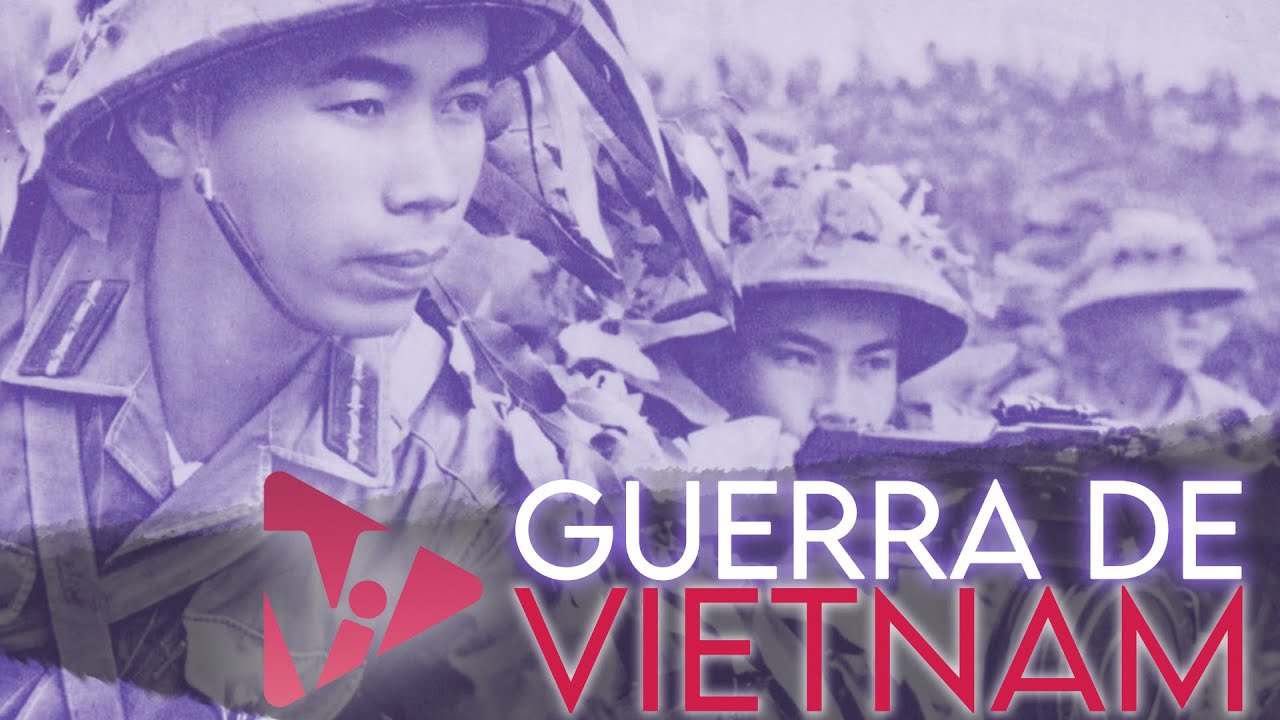History of the Vietnam War 1947 - 1975 Map
Summary
TLDRThe Vietnam War was a protracted conflict that spanned over three decades, with the United States heavily involved from the early 1960s. Initially, the U.S. supported South Vietnam against communist North Vietnam, leading to a brutal guerrilla war. Following key events such as the Tet Offensive and the U.S. bombing campaigns in neighboring countries, the conflict reached a stalemate. The war culminated in the 1973 Paris Accords, marking U.S. withdrawal, but leading to little gain for South Vietnam. The war resulted in millions of deaths and immense destruction in Southeast Asia.
Takeaways
- 😀 The first war in Vietnam (1946–1954) was a struggle between Vietnamese nationalists and French colonial forces, leading to Vietnam's division into a communist North and pro-Western South.
- 😀 The Vietnam War (1955–1975) saw the United States replace France as the main Western power fighting against the communist regime of North Vietnam, led by Ho Chi Minh.
- 😀 The U.S. increased its involvement under President John F. Kennedy, who raised the number of American military advisors in Vietnam to over 16,000 by 1963.
- 😀 President Lyndon B. Johnson escalated U.S. involvement following the Gulf of Tonkin incident, leading to heavy strategic bombing of North Vietnam and an increase in U.S. troop levels.
- 😀 The Viet Cong used guerrilla tactics, including ambushes, assassinations, and the strategic use of jungle and civilian populations to evade direct confrontation with U.S. forces.
- 😀 The war reached a stalemate by 1967, with North Vietnam launching a series of bold attacks during the Tet Offensive of 1968, which resulted in a propaganda victory for the North despite military setbacks.
- 😀 The Tet Offensive, which coincided with the Lunar New Year, led to increased anti-war sentiment in the U.S. and the eventual policy of Vietnamization, where responsibility for ground combat was handed over to South Vietnam.
- 😀 President Richard Nixon continued the Vietnamization policy and ordered a steady withdrawal of U.S. forces, while also conducting heavy bombing raids on North Vietnamese supply routes, including in Cambodia.
- 😀 Major peace talks between the U.S. and North Vietnam took place, leading to the Paris Accords in January 1973, which resulted in a complete U.S. withdrawal and the return of American prisoners of war.
- 😀 Despite the U.S. withdrawal, North Vietnam launched a final invasion of South Vietnam in 1975, leading to the fall of Saigon and the unification of Vietnam under communist rule.
- 😀 The Vietnam War caused over 2 million deaths across Vietnam, Laos, and Cambodia, including more than 58,000 U.S. soldiers, and devastated Southeast Asia with bombings exceeding the total of all World War II bombings.
Q & A
What was the main outcome of the First Indochina War?
-The First Indochina War ended in 1954 with the defeat of the French colonial regime and the division of Vietnam into two parts: the communist North and the pro-Western South.
How did the United States become involved in the Vietnam War?
-The United States became involved in the Vietnam War after France's defeat in 1954, with the U.S. replacing France as the chief Western power supporting South Vietnam against the communist North led by Ho Chi Minh.
What role did guerrilla warfare play in the Vietnam War?
-Guerrilla warfare played a central role in the Vietnam War, with the Vietcong using tactics such as ambushes, assassinations, and blending in with the civilian population to avoid direct confrontation with U.S. and South Vietnamese troops.
What was the significance of the Tet Offensive in 1968?
-The Tet Offensive was a series of bold attacks by North Vietnamese and Vietcong forces on South Vietnamese cities, which, although militarily unsuccessful, became a significant propaganda victory and shifted U.S. public opinion, leading to increased anti-war sentiment.
How did President Lyndon Johnson escalate U.S. involvement in the Vietnam War?
-President Lyndon Johnson escalated U.S. involvement in the Vietnam War after the Gulf of Tonkin incident in 1964, which led to increased bombing campaigns and a dramatic rise in U.S. troop levels.
What was the policy of Vietnamization introduced by President Nixon?
-Vietnamization was a policy aimed at transferring the responsibility for ground combat to the South Vietnamese forces, while gradually withdrawing U.S. troops from the conflict.
How did the U.S. conduct military operations in Cambodia during the Vietnam War?
-In 1970, President Nixon ordered bombing raids on Vietcong supply routes and sanctuaries in neighboring Cambodia as part of an effort to disrupt the enemy's logistics and reduce pressure on South Vietnam.
What were the Paris Accords of 1973, and what did they accomplish?
-The Paris Accords, signed in January 1973, led to a ceasefire between North and South Vietnam, the withdrawal of U.S. forces, and the return of American prisoners of war, but did little to resolve the underlying political issues or protect South Vietnam from future invasion.
What was the outcome of the Vietnam War in 1975?
-In 1975, after the U.S. withdrawal, North Vietnamese forces captured Saigon, leading to the reunification of Vietnam under communist control.
What was the human cost of the Vietnam War?
-The Vietnam War resulted in over two million deaths in Vietnam, Laos, and Cambodia, with more than 58,000 American soldiers losing their lives, while the region was left devastated by extensive bombing campaigns.
Outlines

هذا القسم متوفر فقط للمشتركين. يرجى الترقية للوصول إلى هذه الميزة.
قم بالترقية الآنMindmap

هذا القسم متوفر فقط للمشتركين. يرجى الترقية للوصول إلى هذه الميزة.
قم بالترقية الآنKeywords

هذا القسم متوفر فقط للمشتركين. يرجى الترقية للوصول إلى هذه الميزة.
قم بالترقية الآنHighlights

هذا القسم متوفر فقط للمشتركين. يرجى الترقية للوصول إلى هذه الميزة.
قم بالترقية الآنTranscripts

هذا القسم متوفر فقط للمشتركين. يرجى الترقية للوصول إلى هذه الميزة.
قم بالترقية الآنتصفح المزيد من مقاطع الفيديو ذات الصلة
5.0 / 5 (0 votes)






